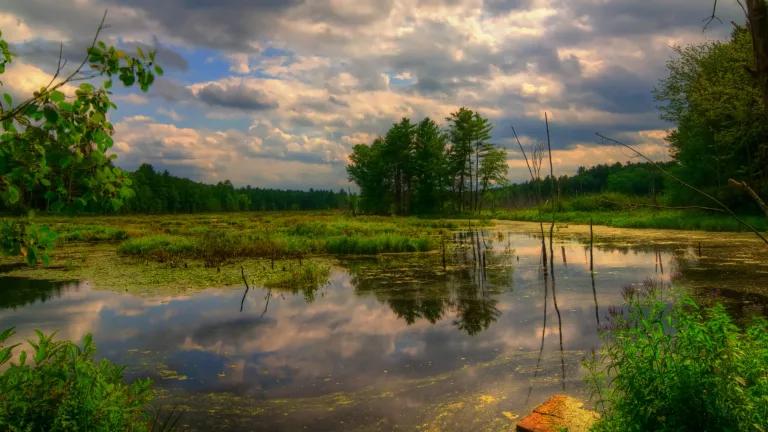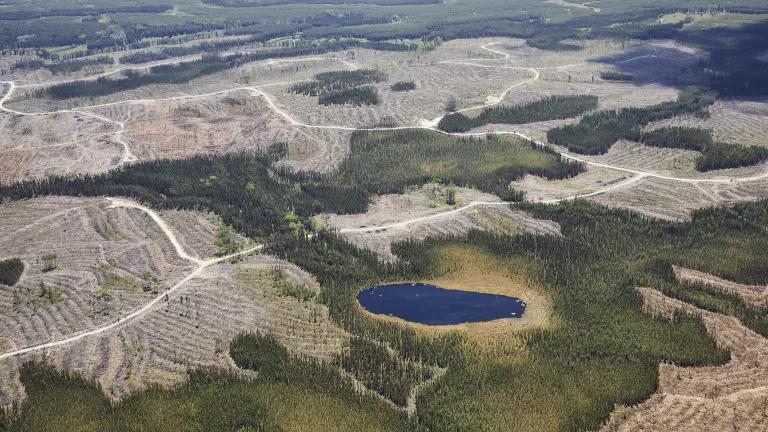Will Countries Commit to Reverse the Destruction of Nature?
Government officials from around the globe will convene virtually October 11-15 to kick off one of the most consequential international meetings that will ever take place: the fifteenth meeting of the Conference of the Parties (COP15) to the Convention on Biological Diversity (CBD).

Puffer Pond Assabet River
NWR Photo Credit Jay Beeler
Five Signals to See if Countries are Serious About Saving the Planet
Government officials from around the globe will convene virtually October 11-15 to kick off one of the most consequential international meetings that will ever take place: the fifteenth meeting of the Conference of the Parties (COP15) to the Convention on Biological Diversity (CBD). While that may sound like an overstatement, this is the forum where countries will decide how to tackle the biodiversity crisis—an existential threat to life as we know it. If the Parties are ambitious enough, they will outline a ten-year plan for securing the natural life support systems we depend on for things like clean air and water, food security, flood control, and general human well-being.
The Biodiversity Crisis
Nature is in sever decline, has been for decades, the consequences are getting worse. As described by Robert Watson, former chair of the Intergovernmental Science-Policy Platform on Biodiversity and Ecosystem Services, “The health of ecosystems on which we and all other species depend is deteriorating more rapidly than ever.” The data are alarming. Seventy-five percent of global land areas have been severely altered by human activity. More than 85 percent of wetlands have disappeared over the last 300 years and the loss of wetland is currently three times faster, in percentage terms, than forest loss. The global species extinction rate is tens to hundreds of times higher than the average over the last 10 million years and is accelerating. More than 500,000 terrestrial species have insufficient habitat for long term survival. One third of marine fish stocks are overharvested and 60 percent are harvested at the edge of sustainability. And almost all warm-water coral reefs—the ocean’s nurseries—face significant losses and local extinctions, with all coral reefs projected to be threatened with extinction by 2050.
People are suffering. We depend on high functioning, thriving, and abundant-with-wildlife ecosystems to produce the critical foundations of human life and society like clean air, clean water, food security, crop pollination, and flood control. Land degradation has reduced crop productivity and we risk more than half a trillion dollars in annual global crops from pollinator loss. More than five hundred million people face food insecurity and hundreds of millions of people are at increased risk of floods and hurricanes because of losses of coastal habitat and protections. Forty percent of the global population lacks access to clean and safe drinking water, while industrial facilities dump 300-400 million tons of heavy metals, solvents, toxic sludge, and other wasted into the world’s waters every year. Altogether, one in five countries are at risk of their ecosystems collapsing because of declines in biodiversity and other natural services.
Tackling the Drivers of Nature’s Destruction
It’s a dire situation, but one we can fix. Our best bet of passing on a maximally livable planet to future generations requires a profound shift in how we look at nature and breaking with destructive ideas around economic progress. In short, we need to prioritize protecting and restoring nature and dismantle the economic systems driving its destruction. The five drivers of the biodiversity crisis are land- and ocean-use changes (example: converting forests to cattle pastures), direct exploitation of species (example: wildlife trade), climate change, pollution (example: industrial waste), and invasive species. The countries meeting virtually in Kunming, China, from October 11-15, will launch the beginning of a meeting to develop and adopt a Global Biodiversity Framework (think of the biodiversity equivalent of the Paris Agreement) that will hopefully provide a blueprint for reversing these drivers, putting the natural world on a path to recovery. While the final negotiations and adoption of targets will take place at the conclusion of COP15 early next year, during this opening week countries will have an opportunity to signal that they are serious about addressing the biodiversity crisis.
Here are five things to look for as countries outline their goals for the meeting:
Commitments to highly protect at least 30 percent of global land and inland waters and 30 percent of the ocean by 2030 (30x30)
The number one driver of nature’s decline in terrestrial ecosystems is the conversion of wild spaces to other uses, like agriculture, plantations, cattle pasture, and suburban sprawl. We can’t keep destroying or degrading natural places and expect the continuation of functioning ecosystems. That’s why 70 countries have joined the High Ambition Coalition for Nature and People—calling on the world to adopt a 30x30 target—and Belgium is championing the Blue Leaders—working to securing an ocean target that provides for a global network of highly and fully protected marine areas and the successful negotiation of a strong new UN High Seas Treaty.
Calls to immediately stop human-induced extinctions and make sure no species are threatened with extinction by mid-century
With a million species threatened with extinction, we have, in effect, a million canaries in the proverbial coal mine. More than half of these species no longer have sufficient habitat for long term survival, meaning we must not only protecting existing natural areas, but restore degraded areas if we hope to save these species from extinction. A world that cannot support an eighth of the life on the planet is destined to inadequately support humans. By committing to reverse these extinction threats, we’ll be committing to guaranteeing the heath of future generations.
Pledges to ensure that plastic, chemical, nutrient and noise pollution no longer harm ecosystems by 2030
Part of the effort to reverse nature’s decline must tackle the scourge of pollution which itself represents a direct threat to biodiversity but also reduces the resiliency of species and ecosystems as they face climate change. We must be doing all we can to reduce stressors on species, including the pollution that grinds away at their ability to reproduce and thrive.
Commitments to increase biodiversity funding to at least $950 billion per year
Saving the planet won’t be cheap, but it’s an investment in natural infrastructure that will support humanity for centuries to come. Biodiversity funding should increase financial flows to developing countries by at least $100 billion per year, leverage private finance, and increase domestic resource mobilization.
Calls to eliminate all direct and indirect subsidies harmful to biodiversity, including fossil fuel subsidies
We can gauge the sincerity of world leaders’ commitments to reverse natures decline if they include the elimination or redirection of all direct and indirect government incentives that are harmful for biodiversity. The most basic thing any government can do is stop subsidizing companies to destroy nature, but it may also be the hardest given the control companies and wealthy elites have over governments.
Anything less than these kinds of commitments will signal that countries are not serious about reversing nature's decline and are intent upon leaving a legacy of destruction for future generations. Countries must make bold, innovative commitments on how they will protect biodiversity and must follow up on those commitments during the second half of this convention in 2022. Our planet depends on it.




